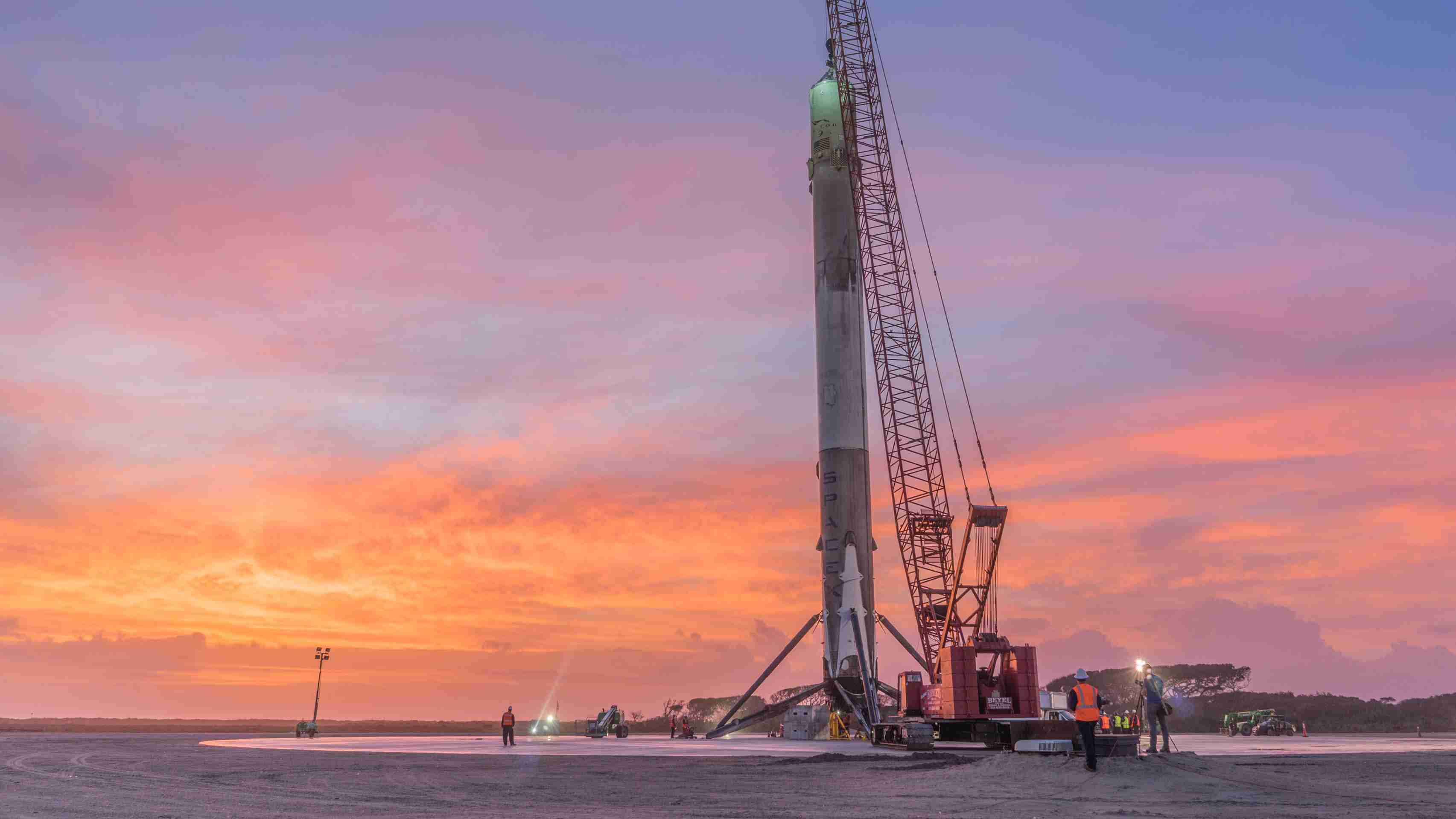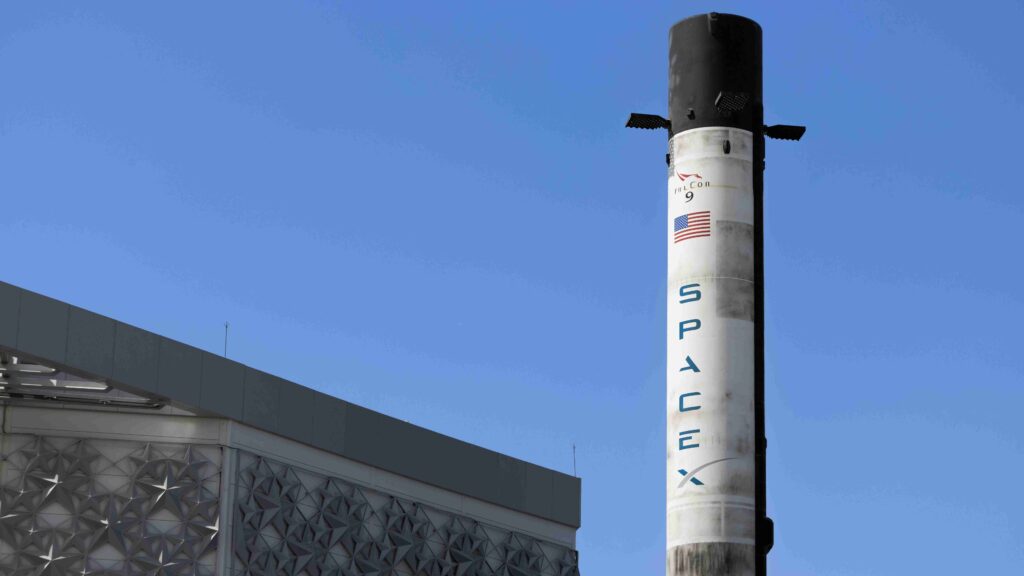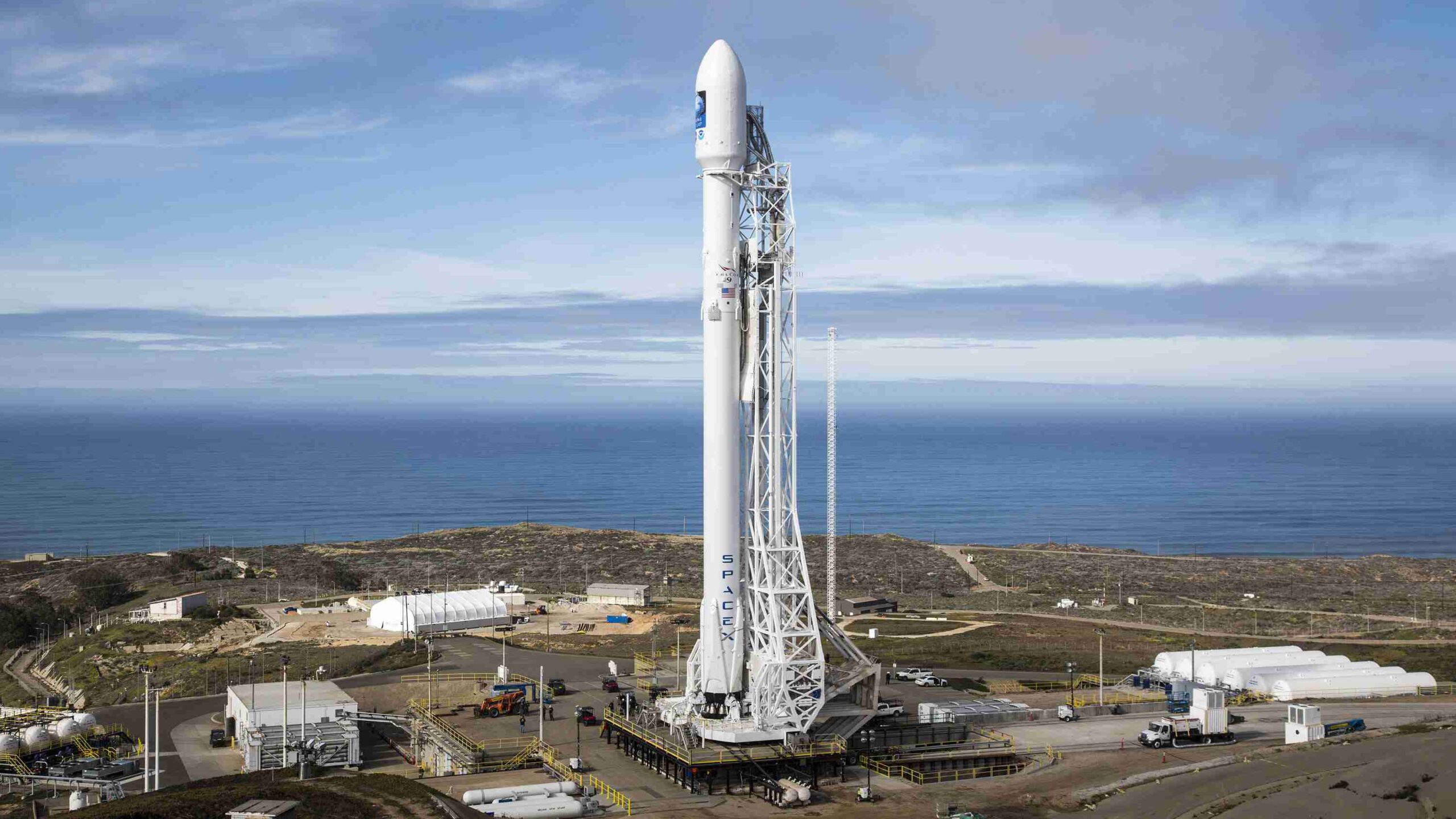In the ever-intensifying global space race, a new challenger has emerged that’s shaking the foundations of the aerospace industry. China is reportedly preparing to launch a powerful new rocket — one that’s already being dubbed a SpaceX Falcon 9 and Starship rival. Known as Zhuque 3, this rocket is developed by the private Chinese company Landspace, and it’s making headlines for all the right reasons. Even Elon Musk, the visionary CEO of SpaceX, has acknowledged its potential.
Yet, despite his rare praise, Musk isn’t worried at all. He remains absolutely confident in SpaceX’s ultimate dominance, and his faith lies in one word: Starship. The colossal rocket that represents humanity’s next step beyond Earth.
In this post, we’ll dive deep into:
- What Elon Musk actually said about Zhuque 3
- Why the Chinese rocket is getting so much global attention
- And why Musk still believes SpaceX cannot be beaten
Let’s uncover the full story behind China’s ambitious attempt to challenge SpaceX — and why it may already be too late.
China’s Growing Strength in the Space Race
It’s no secret that China has been rapidly building a stronger competitive position in the space industry than any previous challenger to the United States. Over the last decade, the competition between China and the U.S. has become increasingly intense, especially as private Chinese aerospace startups adopt the philosophy of “copy and improve.”

Among all global companies, the one most often emulated is SpaceX. Thanks to its revolutionary rockets — the Falcon 9 and Starship — SpaceX has set new global standards for innovation, reusability, and cost efficiency.
Now, Landspace, a rising Chinese aerospace company, appears ready to combine the best features of both rockets into a single next-generation launcher called Zhuque 3.
Meet Zhuque 3: China’s Falcon 9-Starship Hybrid
The name Zhuque translates to “Vermilion Bird”, a mythical creature symbolizing fire and the southern skies in Chinese mythology. Landspace, the company behind this ambitious rocket, has already developed two predecessors — Zhuque-1 and Zhuque-2.
The real milestone came with Zhuque-2, which became the first methane-fueled rocket in the world to reach orbit and successfully deploy payloads. That accomplishment marked a turning point for China’s private space sector, proving that it could innovate beyond traditional government-led programs.
Building on that success, Landspace has now set its sights higher than ever. The company is developing a reusable, stainless-steel rocket designed to compete directly with SpaceX’s most advanced systems.
That rocket is Zhuque 3, and it’s already under active development. Landspace has conducted successful vertical takeoff and landing (VTVL) tests reaching 10 kilometers in altitude, along with a powerful static fire test that drew international attention in October.
According to Landspace’s roadmap, Zhuque 3’s first launch could take place before the end of this year, with full reusability expected by next year.
Elon Musk’s Reaction: Surprised but Still Confident
When news of Zhuque 3’s progress spread, Elon Musk took notice. In a rare public acknowledgment, Musk commented online:
“If they are lucky, it might outperform Falcon in five years, by which time SpaceX will be launching Starship.”
That simple remark set the internet ablaze. Musk, who’s known for his unshakable confidence, admitted that Zhuque 3 could surpass the Falcon 9 within five years — an unexpected statement considering the Falcon 9 currently dominates the global launch market.
However, Musk quickly explained his reasoning. Responding to another post, he noted that Landspace had added elements of Starship, such as the use of stainless steel and methane-based propellants (methalox), to a Falcon 9-style architecture. This smart combination, he said, could give Zhuque 3 a real edge — but not enough to surpass SpaceX in the long run.

Zhuque 3’s Design and Power: Familiar, Yet Different
When you look at the technical specifications of Zhuque 3, it’s easy to see why it’s being called a hybrid of SpaceX’s Falcon 9 and Starship.
- Height: 66 meters
- Diameter: 4.5 meters
- Liftoff mass: ~550 tons
These numbers are strikingly similar to Falcon 9’s proportions. But Landspace isn’t stopping there — an extended version, Zhuque 3E, is already in the works, reaching 76.2 meters in height and 660 tons in liftoff mass.
The rocket’s first stage uses nine TQ-12A engines, arranged in a familiar octaweb configuration — just like Falcon 9’s Merlin engines. The upper stage is powered by a single TQ-15B engine, completing a nearly identical two-stage setup.
The main difference?
Only five of the nine TQ-12A engines on Zhuque 3 can gimbal, while all nine on Falcon 9 can. Still, the rocket produces a combined liftoff thrust of 769 tons, slightly higher than Falcon 9’s 760 tons.
In terms of payload capacity, Zhuque 3 can carry:
- 18.3 tons to Low Earth Orbit (LEO) in reusable mode
- 21 tons in expendable mode
Those numbers are nearly identical to Falcon 9’s performance, making Zhuque 3 one of the most capable rockets ever built outside the U.S.
Borrowing SpaceX’s Best Features
Zhuque 3 borrows heavily from SpaceX’s proven playbook. It features:
- Grid fins for atmospheric control during descent
- Landing legs for soft landings
- A reaction control system
- Strake wings to improve aerodynamic stability
Landspace claims Zhuque 3 is designed for up to 20 reuses, reducing launch costs by 80–90% compared to traditional expendable rockets.
But perhaps the most significant innovations lie in its materials and fuel — the same combination that defines SpaceX’s Starship.
Stainless Steel Structure
Stainless steel offers superior heat resistance, cheaper production, and easier manufacturing compared to aluminum alloys.
Methane (Methalox) Engines
Methane burns cleaner, leaves less residue, and is ideal for long-term reusability. It also enables future deep-space missions, including potential journeys to Mars.
By blending Falcon 9’s design with Starship’s materials and fuel, Zhuque 3 represents China’s strategic attempt to merge the best of both worlds.
Even Musk acknowledged that — with enough luck and precision — Zhuque 3 might outperform Falcon 9. But that’s only half the story.
Can Zhuque 3 Really Surpass SpaceX?
While Zhuque 3 is undoubtedly impressive, SpaceX’s lead is monumental. The company’s experience, scale, and technical mastery are years — even decades — ahead.
By the time Zhuque 3 reaches full operational capability, SpaceX will likely have perfected Starship, a rocket that is larger, more powerful, and fully reusable.
In other words, Zhuque 3 may catch up to where SpaceX is today, but SpaceX will already be shaping tomorrow.

Starship: Humanity’s Next Leap Forward
Let’s put things in perspective. Starship isn’t just another rocket — it’s a symbol of a new era in human space exploration.
Standing over 120 meters tall, and potentially reaching 150 meters in future versions, Starship dwarfs Zhuque 3 in both size and capability.
In fact, Starship’s booster alone is taller than the entire Zhuque 3 rocket.
The Power of Starship
Each of Starship’s 33 Raptor 3 engines produces 280 tons of thrust, giving the rocket a total liftoff thrust exceeding 9,000 tons — with future versions expected to cross 10,000 tons.
By comparison, Zhuque 3’s total thrust is under 800 tons. That’s less than one-tenth of Starship’s power.
Payload Capacity
- Zhuque 3: Up to 21 tons to LEO
- Starship: Over 100 tons today — and 200 tons in future versions
This means Starship can carry 10 times more payload than Zhuque 3 at a lower cost per kilogram.
Reusability: The Real Game-Changer
One of the biggest differences between Zhuque 3 and Starship lies in reusability.
While Zhuque 3’s first stage is reusable up to 20 times, its second stage remains expendable, much like Falcon 9’s.
Starship, on the other hand, is fully reusable — both the booster (Super Heavy) and the ship itself are designed to be recovered and relaunched rapidly.
This full-cycle reusability is the core of Elon Musk’s vision to make space travel as routine as air travel. Every successful recovery and relaunch saves millions of dollars and moves humanity closer to multi-planetary life.
The Mechazilla Revolution
SpaceX’s Mechazilla system — a pair of massive robotic arms that catch the returning booster mid-air — is one of the most revolutionary engineering feats ever attempted.
Once fully operational, Mechazilla will allow Starship to launch, land, and relaunch within hours, something no other rocket in the world can match.
Landspace’s Zhuque 3, while ambitious, is still years away from even attempting such a system.
Musk’s Five-Year Prediction: A Subtle Message
When Musk said Zhuque 3 might outperform Falcon 9 “in five years”, it wasn’t just a compliment — it was a challenge.
What he really meant was that by the time Zhuque 3 reaches Falcon 9’s level, SpaceX will be far beyond, launching Starship regularly and possibly even sending missions to Mars.
That means Zhuque 3’s best-case scenario is catching up to SpaceX’s past, not its future.

The Falcon 9 Legacy: A High Bar to Beat
Let’s not forget the legendary Falcon 9. With over 550 successful launches and more than 100 flights annually, it’s already the most reliable and frequently used orbital rocket in history.
Some Falcon 9 boosters have flown over 20 times, setting a global standard for reusability and reliability.
As Musk proudly noted,
“The SpaceX Falcon rocket will do more launches and carry more payload to orbit this year than the Space Shuttle did in its entire history.”
That’s the level of performance Zhuque 3 must compete against — and it’s no easy task.
Why Zhuque 3 Still Matters
Despite the gap, Zhuque 3’s development is a monumental milestone for China’s private space industry. It demonstrates:
- The growing technical expertise of Chinese aerospace companies
- The potential for private innovation beyond state programs
- And the increasing globalization of the space race
Zhuque 3 may not dethrone SpaceX, but it’s a clear sign that China is accelerating fast — and that the future of space exploration will be a multipolar race, not a one-nation show.
Final Thoughts: Starship Is in Another League
Even Elon Musk himself put it best when he said:
“Starship is in another league.”
That single statement perfectly sums up the situation. While Zhuque 3 is an extraordinary achievement for China, it’s still a generation behind SpaceX’s technology.
Starship is not just a rocket; it’s a vision of interplanetary travel, a symbol of human progress, and a leap toward making life multiplanetary.
Zhuque 3 proves that SpaceX has set the benchmark so high that even the most advanced competitors must emulate its design just to keep up.
But in this race, imitation alone isn’t enough. SpaceX’s relentless pace of innovation, experience from hundreds of launches, and commitment to reusability ensure that it remains the undisputed leader in the new space era.
FAQs
1. What is China’s Zhuque 3 rocket?
Zhuque 3 (ZQ-3) is a next-generation reusable rocket developed by the Chinese private aerospace company Landspace. It’s designed to rival SpaceX’s Falcon 9 and Starship by using stainless steel construction and methane-fueled engines (methalox) for greater efficiency and reusability.
2. Who makes the Zhuque 3 rocket?
Zhuque 3 is built by Landspace, a private Chinese aerospace company based in Beijing. Landspace previously developed Zhuque-1 and Zhuque-2, with Zhuque-2 becoming the first methane-fueled rocket to reach orbit.
3. Why is Zhuque 3 compared to SpaceX’s Falcon 9?
Zhuque 3 is often compared to SpaceX’s Falcon 9 because it shares a two-stage design, nine engines on the first stage, and vertical landing capabilities. Its performance and payload capacity are also similar, making it a direct competitor in the reusable launch market.
4. What makes Zhuque 3 different from other Chinese rockets?
Unlike most Chinese rockets, which are state-owned and expendable, Zhuque 3 is privately developed and reusable. It also uses stainless steel instead of aluminum and methane instead of kerosene — similar to SpaceX’s Starship.
5. Has Zhuque 3 launched yet?
As of now, Zhuque 3 has completed vertical takeoff and landing tests and static fire tests. Landspace aims to conduct the first orbital launch by the end of this year and achieve full reusability by next year.
6. How powerful is Zhuque 3?
Zhuque 3 produces about 769 tons of liftoff thrust, slightly higher than Falcon 9’s 760 tons. However, it’s still far less powerful than SpaceX’s Starship, which exceeds 9,000 tons of thrust.
7. What did Elon Musk say about Zhuque 3?
Elon Musk commented that Zhuque 3 might outperform Falcon 9 within five years, acknowledging its impressive design. However, he added that by then, SpaceX will already be launching Starship, meaning SpaceX will still lead in innovation and scale.
8. Why does Zhuque 3 use stainless steel?
Stainless steel is stronger, cheaper, and more heat-resistant than traditional aerospace materials. It allows for better thermal protection and simplifies manufacturing, making it ideal for reusable rockets — the same reason SpaceX chose it for Starship.
9. Why does Zhuque 3 use methane fuel?
Methane (CH₄) burns cleaner than kerosene, leaves less carbon residue, and supports multiple reuses of rocket engines. It’s also more suitable for future deep-space missions, including Mars, where methane can be synthesized locally.
10. How does Zhuque 3’s payload compare to Starship?
Zhuque 3 can carry 18–21 tons to low Earth orbit, similar to Falcon 9. In contrast, Starship can carry over 100 tons to LEO, and future versions could reach 200 tons, making it roughly 10 times more powerful.
11. Is Zhuque 3 fully reusable?
Not yet. Zhuque 3’s first stage is designed for up to 20 reuses, but its second stage remains expendable, similar to Falcon 9. Starship, by contrast, is 100% reusable — both stages are designed to land and fly again.
12. What is the “Mechazilla” system that SpaceX uses?
Mechazilla is SpaceX’s massive robotic arm system designed to catch the returning Starship booster and ship during landing. It allows for faster turnarounds and could enable multiple launches per day — something Zhuque 3 currently cannot match.
13. Can Zhuque 3 really compete with SpaceX?
While Zhuque 3 is an impressive step for China, SpaceX’s experience, reliability, and production scale put it far ahead. Zhuque 3 may match Falcon 9’s capabilities in the future, but Starship’s development keeps SpaceX years ahead in innovation.
14. What is the launch cost difference between Zhuque 3 and Falcon 9?
Landspace claims that Zhuque 3’s reusability could cut launch costs by 80–90% compared to traditional rockets. However, Falcon 9 already operates at record-low costs, making it difficult for any competitor to beat SpaceX’s cost-per-kilogram efficiency.
15. Why is Elon Musk so confident SpaceX will stay ahead?
Musk’s confidence comes from SpaceX’s continuous improvement model. With hundreds of launches, rapid iteration, and full reusability, SpaceX constantly refines its rockets faster than competitors can copy them. As Musk said, “Starship is in another league.”
16. What does Zhuque 3 mean for the future of the space race?
Zhuque 3 signals a new era of competition in the global space industry. It shows that China’s private sector is catching up fast, but also that SpaceX has set the gold standard. This rivalry will push faster innovation, lower costs, and more ambitious missions across the world.
Read More:
- SpaceX’s New Nuclear Starship Design to Mars in a Day Shocked NASA! 100X Better
- Nobody Realized! Elon Musk’s Tesla Model 2 JUST Changed: Never Done Before
- Starship lunar update shows SpaceX will not give up the Moon without a fight
- Elon Musk’s AI empire grows as xAI leases Palo Alto space near Tesla
- Tesla’s popular side business is going to get bigger, Elon Musk says

